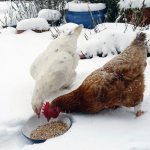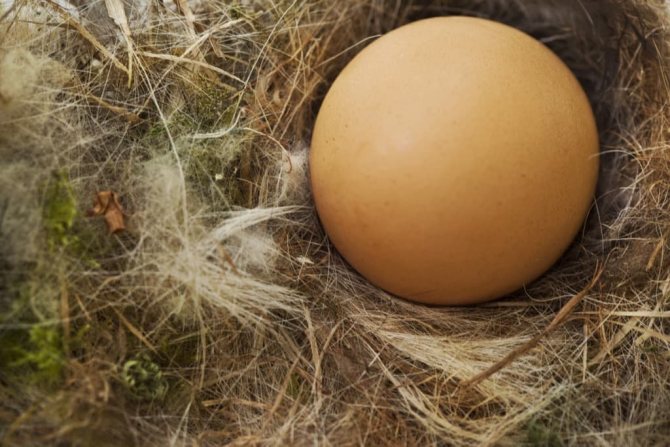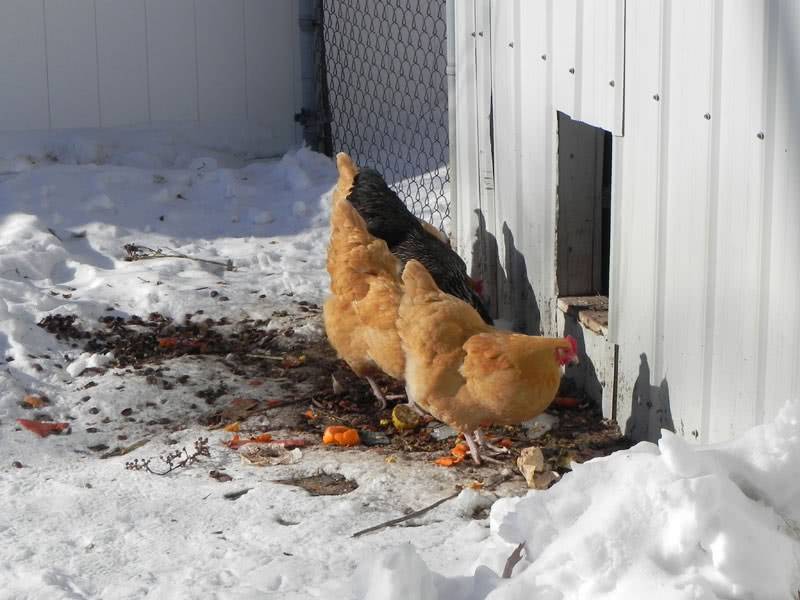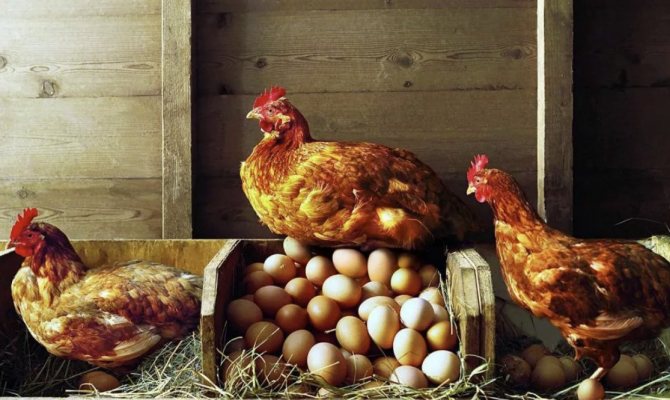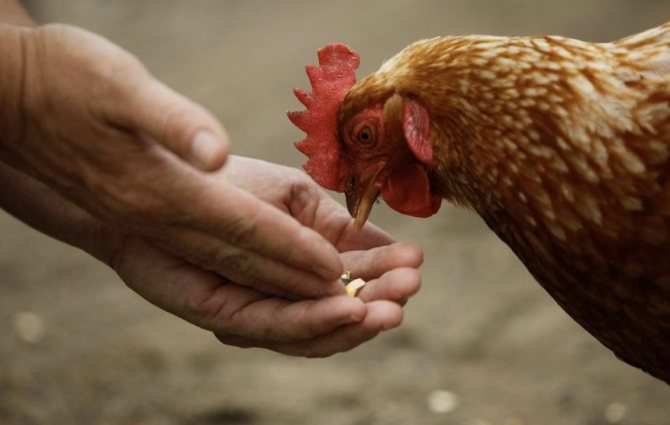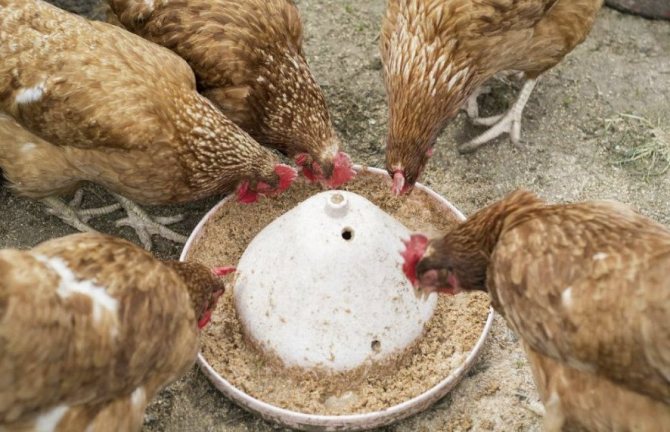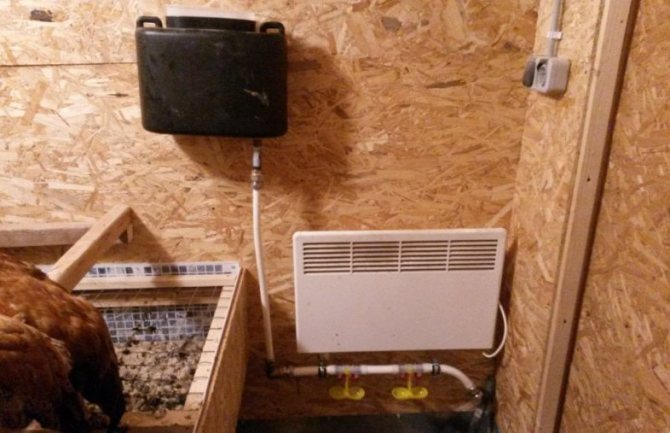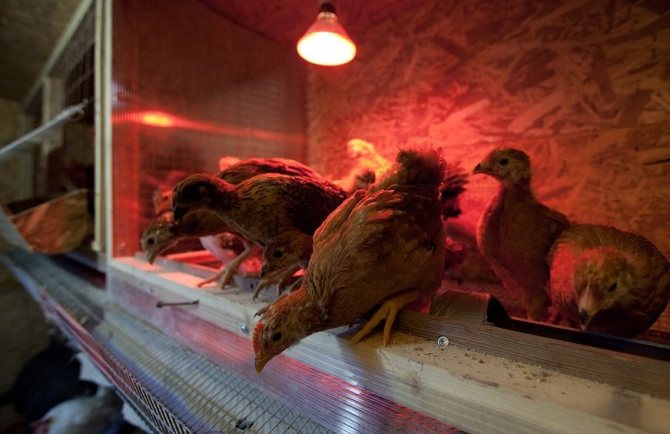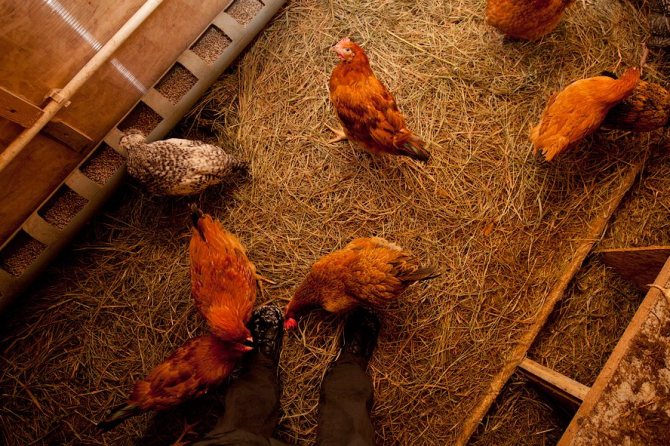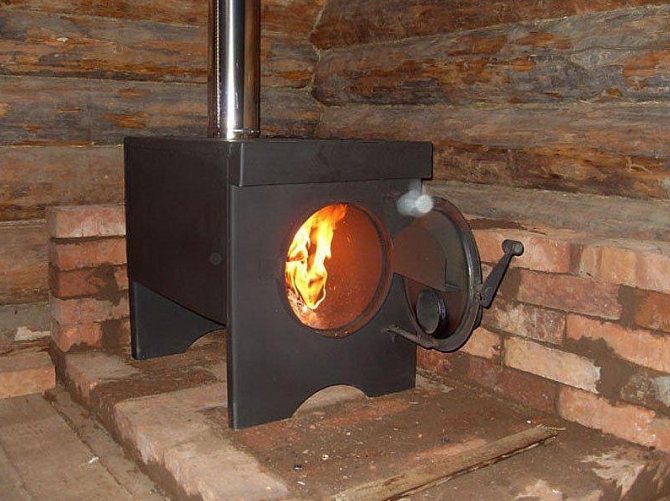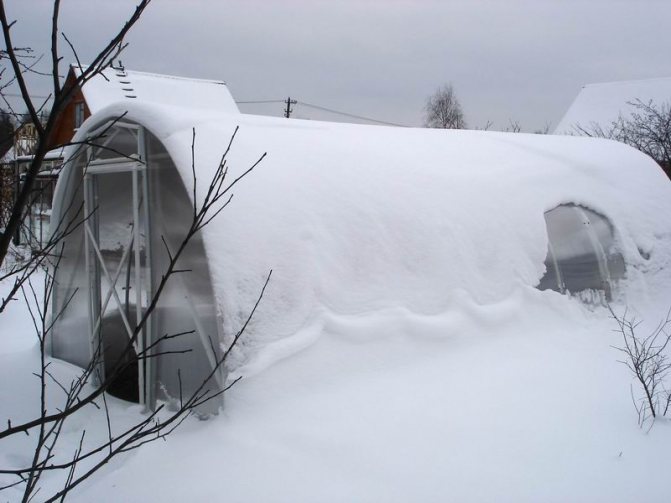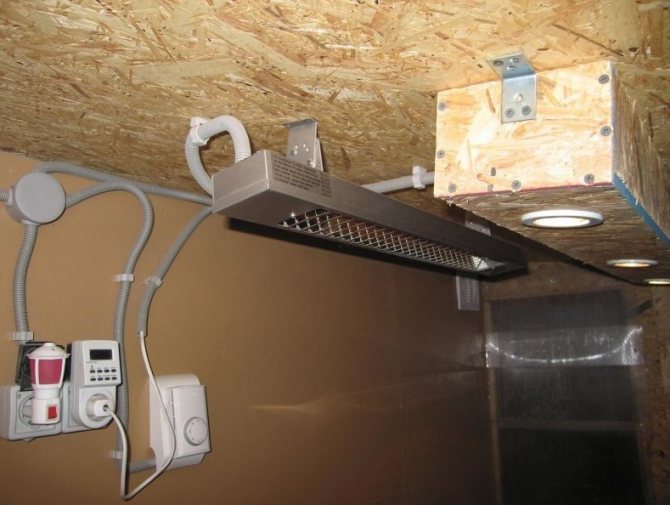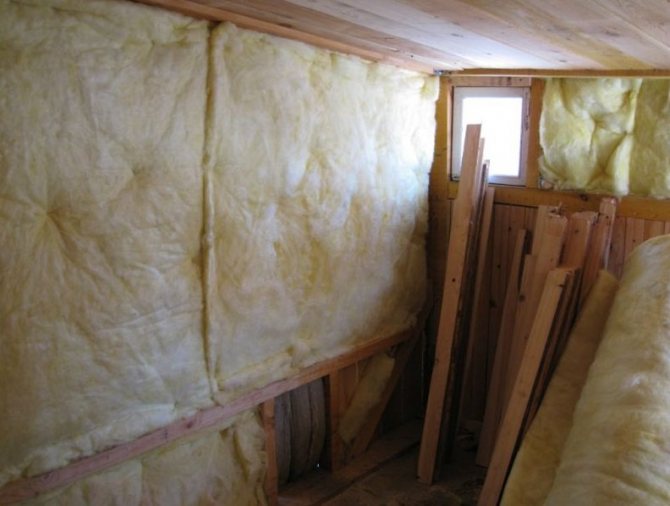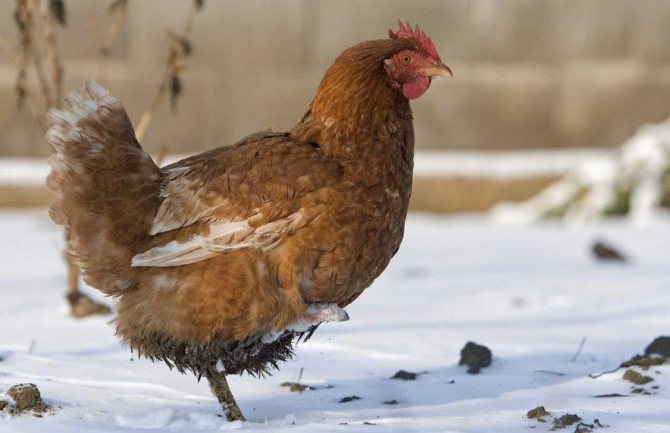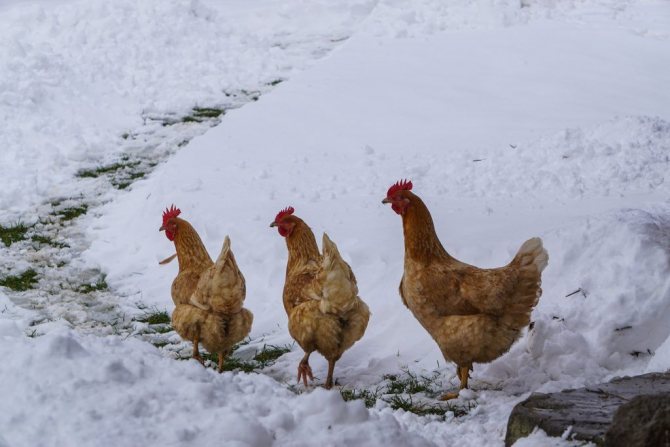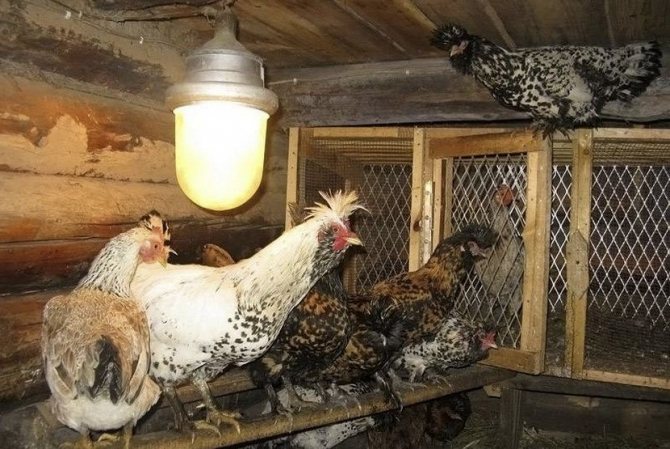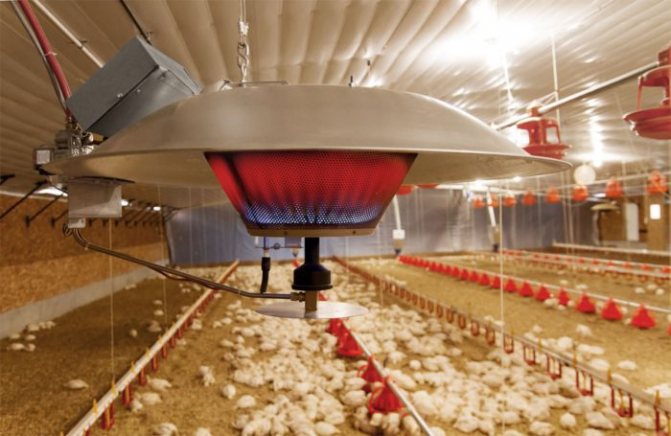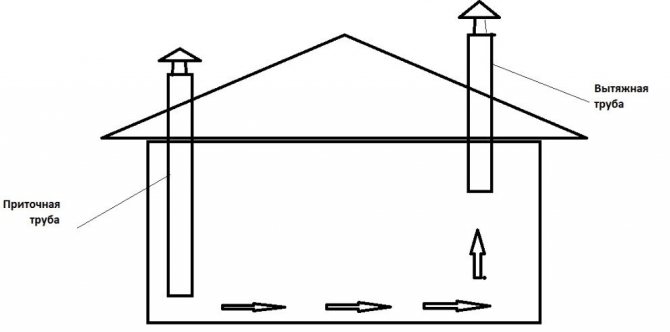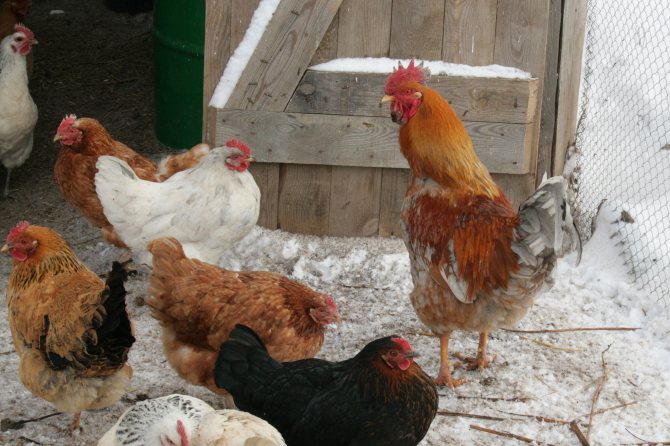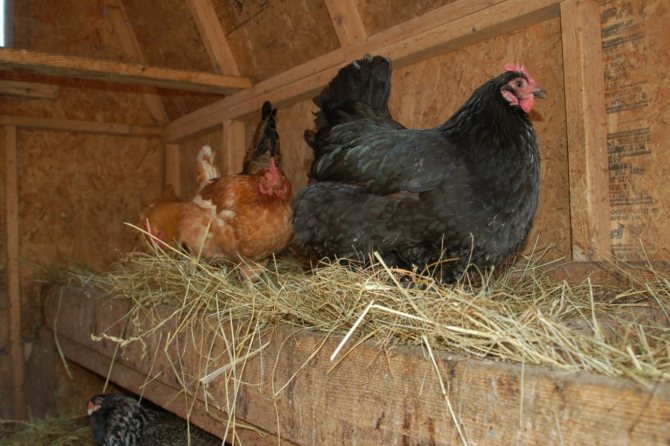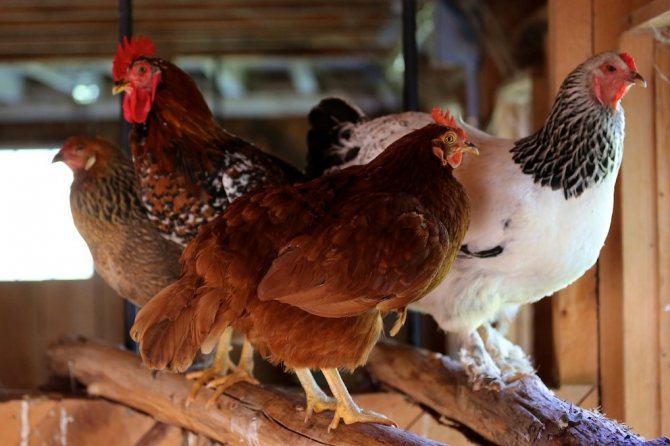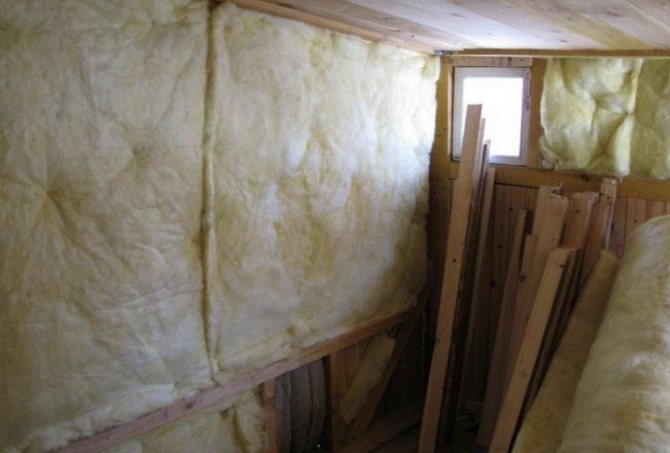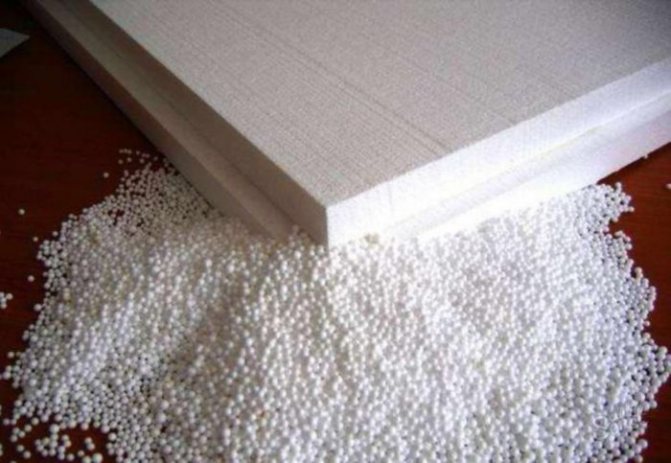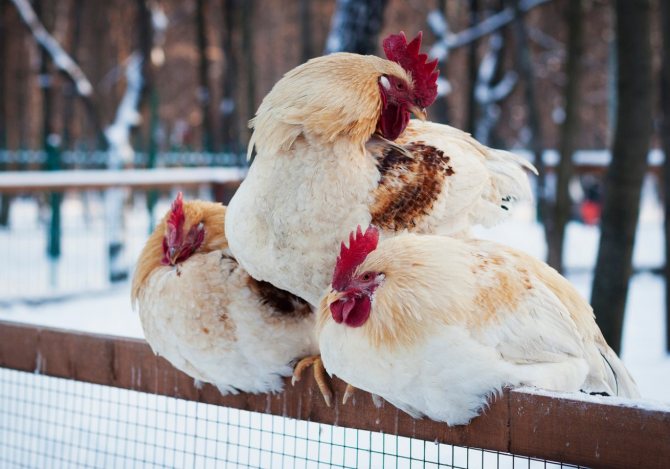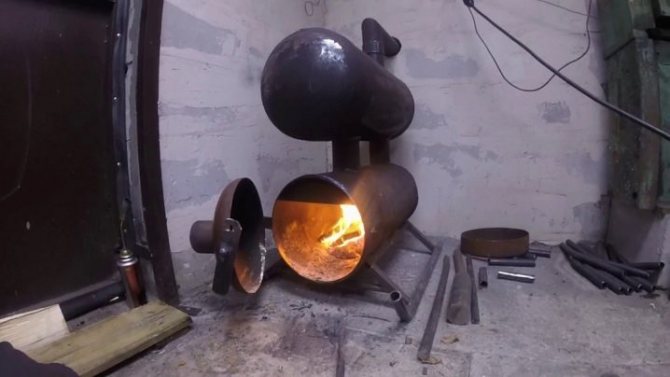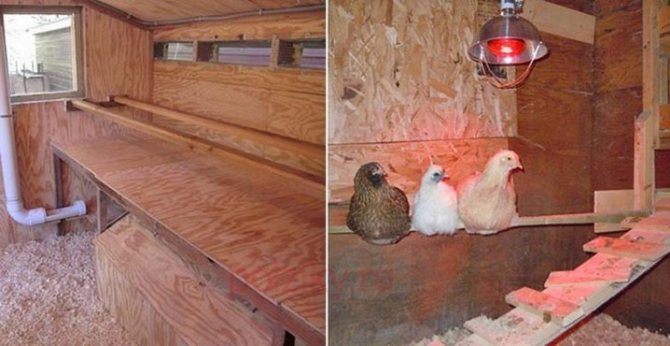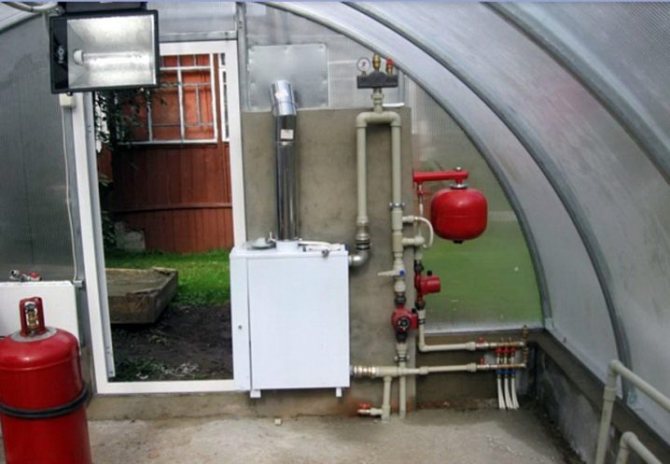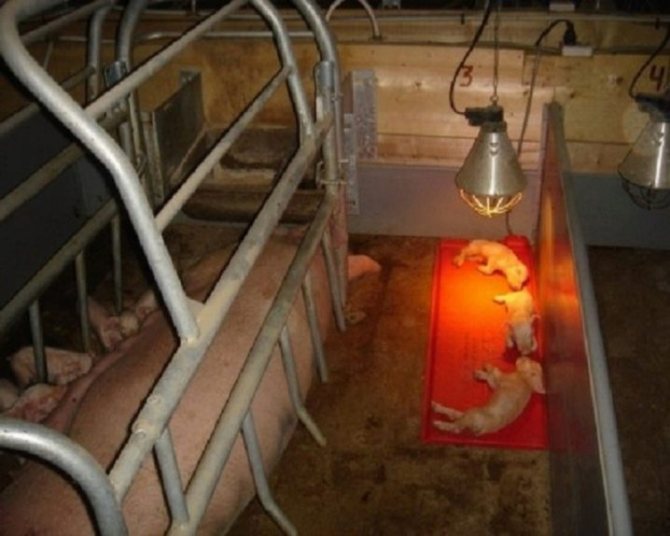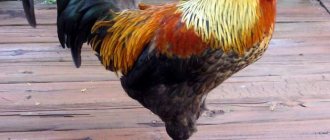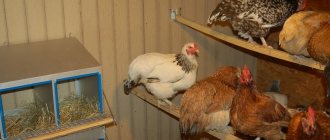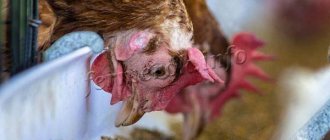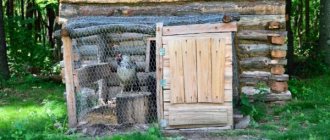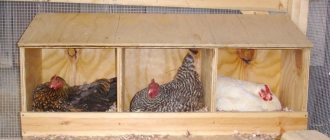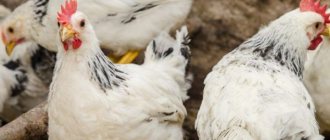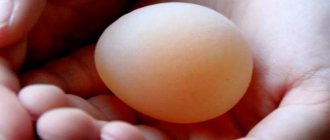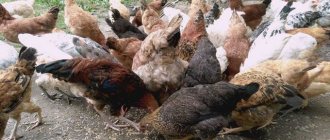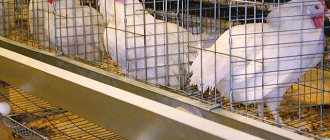Keeping laying hens in the winter at home - general recommendations and advice
Preparations for wintering hens should begin long before the onset of the first frost. First of all, when you grab a chicken coop or another place planned to accommodate feathered pets, you need to try to create comfortable conditions so that the coming bad weather and cold affect the way of life of the hens as little as possible. When preparing the chicken coop for the winter, you should pay attention to the livestock, leaving the necessary minimum of healthy, well-laying birds for the winter.
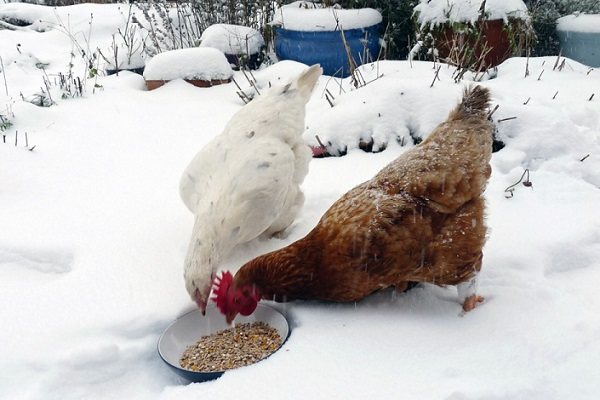
During the cold season, laying hens should be particularly well fed. High-quality and varied feed will help the bird to endure the winter more easily, will allow it to maintain active egg production.
Features of the diet and rules for feeding laying hens in winter
The summer diet of poultry is very rich and varied. The abundance of plant and protein foods, vegetables and fruits, being a good feeding, fully meet the needs of the chicken in nutrients and minerals, vitamins. In late autumn, this wealth begins to dwindle, and the poultry house is required to diversify and saturate the feed with everything necessary. Let's talk in more detail about the diet of laying hens in winter.
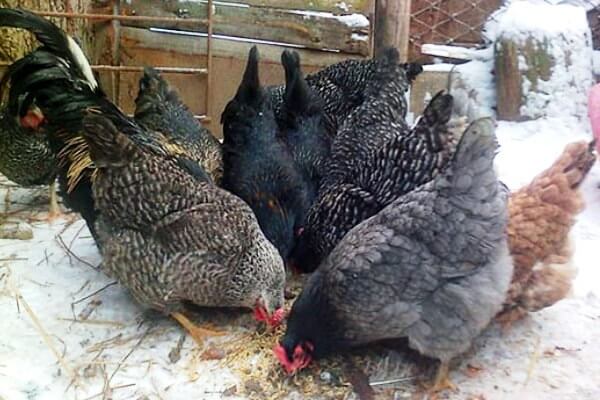

What is the best way to feed laying hens in winter?
Practical tips for feeding laying hens in winter:
- Increase the number of feedings, bringing the minimum amount to 3 times a day. At low temperatures, the chicken's body needs heating and spends much more energy on this, the consumption and intake of which should be carried out evenly throughout the day. Juicy food and mash should be given in the morning and at lunchtime, in the evening dry food should be used. Coarse food, digesting longer, provides the bird with the necessary energy at night.
- Diversify your diet as much as possible, introduce mash, cereals, vegetables and melons. Combine different feeds.
- Try to add to the diet more fresh, green feed. Provide hens with hay harvested in summer, preferably deciduous plants. It is advisable to hang hay above the floor. It is useful to give dried nettles, branches of conifers.
- Supplement food sprouted oats, wheat. Sunflower seeds and cake are very useful.
- A good feeding is fish and bone meal, mineral and vitamin supplements, in a rich assortment offered by manufacturers. Fish oil, in small quantities added to roughage, has a good effect on the body of a bird.
- Poultry feeding significantly increases egg production proteins of vegetable origin. Reverse, whey, cottage cheese are used.
- The bird's body must be fully saturated with calcium and foods with its rich content. In the chicken coop, a container with sand, small pebbles, shell rock is required. It is necessary to give crushed eggshells, chalk.
- Drinking bowls poultry must be kept clean, they must always have clean and fresh water. Chickens are prone to colds, so they need to drink water at room temperature. The poultry house needs to control this issue by adding warm water to the drinker in winter. You can even make a special winter drinker for chickens.
When choosing a balanced diet and setting the daily amount of food, you need to remember that excess nutrition has a bad effect on the egg production of laying hens, including in winter. They gain extra weight, become less active, and run worse.
One bird consumes about 150 grams of food per day. Based on this, the daily volume required for all livestock is determined. The correct indicator is considered if there is almost no food left in the feeders by the next feeding.
Each house will set the feeding schedule and train the poultry to use it. Usually, the first visit to the chicken coop takes place from 6 to 8 in the morning. At lunchtime, chickens are fed at 1 pm, at night between 5 and 6 pm. In the morning and for lunch, they give mash, at night, grain of cereals. Fresh, warm water must be topped up every time. Fresh hay is added. Remove low-quality food debris.
Giving hens products from the home table need to rememberthat is not recommended sweet pastry, black bread, meat. Do not give beets in large quantities. Potatoes in the diet of chickens should only be boiled.
Video: how to feed chickens in winter
Note! Many poultry houses grow fodder root crops and vegetables specifically for feeding laying hens in the winter.
Preparing the chicken coop for winter
Preparation for winter must be carried out long before the onset of the first frost. You need to start with a chicken coop or other place planned to accommodate feathered pets.
When preparing a chicken coop for the winter keeping of domestic layers, it is necessary:
- Spend general cleaning places of detention, disinfect the room as efficiently as possible.
- Check ventilation work.
- Spend overhaul of chicken coop equipment, perches and nests.
- Qualitatively insulate the room, excluding the slightest drafts and moisture getting into the chicken coop.
- Prepare quality lightingrequired by hens on a short winter day.
Video: lighting in the chicken coop in winter
The easiest way is to prepare a capital chicken coop for winter. If the bird is planned to be kept in another place, it is necessary to create appropriate conditions for its keeping.
Thorough warming of the house brings great positive results. For the health of the entire flock of layers, it is very important to eliminate all drafts, as well as the possibility of moisture entering the room.
Video: heating a chicken coop in winter
How to insulate a chicken coop for the winter?
General requirements for a hen house intended for winter keeping hens:
- Comfortable temperature... The optimum temperature for keeping hens in a hen house should be between + 10 ... + 18 ° C. A lower or higher temperature begins to significantly reduce the egg production of birds. A thermometer should be installed in a convenient place for monitoring. If there is a fear of a drop in frost temperatures below +10 ° C, you need to think about a stationary heating source. When choosing a heating system, special attention must be paid to the safety of the laying hens.
- Optimum air humidity. The relative humidity in the house should be 70%.
- Correctly placed equipment. Perches and nests should be at least 60 cm above the floor. Drinkers and feeders should be approached comfortably.
- Effective lighting... The hen house should be provided with high-quality lighting that artificially prolongs the short winter day. Daylight hours for laying hens in winter should be at least 13 hours. Artificial lighting is applied early in the morning and at sunset, extending the daylight hours as needed. It is best to illuminate the chicken coop with fluorescent lamps. It is best to turn the light on and off at the same time, developing a healthy mode for laying hens.
- Good ventilation. The room must have effective ventilation.
- High quality bedding. The floor in the hen house in several layers should be sent out with litter. Hay or straw, sawdust, chopped reeds, dry moss are used as material. Wet litter should be removed immediately and replaced with dry one. Once every few days, it must be agitated, turned over. A high-quality bedding not only maintains the hygiene of the room, but is also an additional source of heat.
- Mandatory the presence of an ash box, flutters.
The installation of automatic relays, turning on the light, automating ventilation and heating, greatly simplifies the maintenance of the chicken coop in winter.
Video: warm chicken coop in winter
Artificial heating options
The most popular option among poultry farmers is the use of infrared lamps. You can use both a single lamp and mirror bulbs, which are designed to heat a larger area.
The advantage of this nominal option is the heating of objects in the room, as well as the surface that is under the influence of rays. Another benefit of an infrared lamp is that it will dry out bedding materials, which has a beneficial effect on moisture readings. The lamp can work continuously, without turning off. As breeders note, thanks to the pleasant light, birds behave more calmly. As for oxygen, it will not be burned. The ease of maintenance of such lamps makes the owners lean towards this option.
An important point. Infrared lamps have some disadvantages, including high power consumption and short service life. If moisture gets on the lamps, they may begin to crack, but here it all depends on the observance of the operating rules.
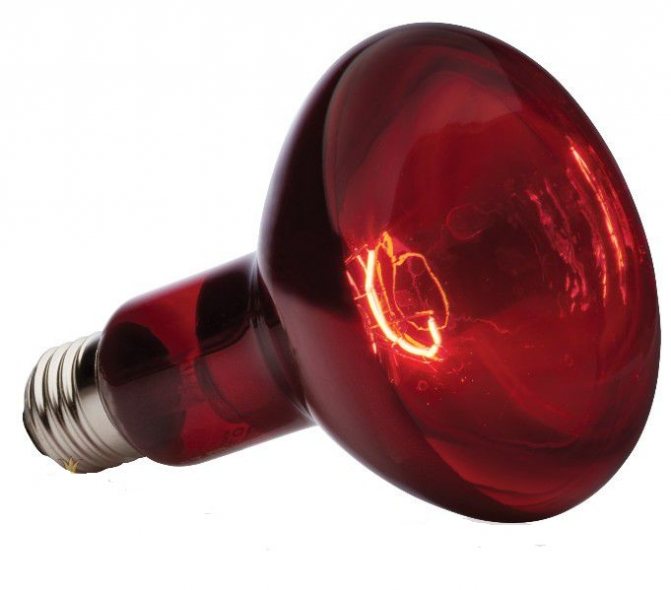

Infrared lamp
When installing lamps, remember that their location should not be closer than 50-100 cm from objects that need to be heated. Some chickens may be interested in innovation in their property and try to use the lamp as a roost. It is recommended to use ceramic cartridges and protective devices for safety.
How to keep chickens in winter in the absence of a warm room or without heating
If there is no warm, stationary chicken coop to keep the hens, you should not despair. Quite simply and inexpensively for poultry, you can adapt almost any existing room. Chicken-birds are picky and tolerate winter well even in poorly adapted conditions. Moreover, in prepared and equipped places they winter with pleasure, constantly delighting the owner with eggs.
Whatever room is converted, the main requirement for it remains the same - to create comfortable conditions for feathered pets.
Taking into account the prescriptions that are mandatory for a stationary chicken coop, you need to do everything necessary to the maximum.
Is it possible to keep laying hens in the garage
Many poultry houses have long and quite effectively used the garage for keeping layers in the winter. Of course, the place initially not adapted for the life of feathered pets will have to be re-equipped, creating acceptable conditions. The concrete floor of the garage is detrimental to the health of the bird. Therefore, it is advisable to cover it with a wooden flooring and fill it with bedding. Usually, poor ventilation in garages will also need to be remodeled to suit the needs of new tenants. Create the desired humidity, make lighting. Converting a garage into a chicken coop does not take much time and effort, bringing benefit and pleasure to your wet-nurses.
Video: keeping chickens in the garage in winter
Overwintering hens in a polycarbonate greenhouse
In recent years, many poultry houses have found an interesting solution - wintering laying hens in greenhouses.The use of premises that are empty during the winter is becoming more and more popular and is considered to be very effective and expedient. In order for the wintering of the bird to be successful, it is required to create favorable conditions by carrying out work on the arrangement of the greenhouse.
When preparing the greenhouse for placing hens for the winter, it is necessary to:
- clean the room, remove excess land;
- eliminate drafts;
- make ventilation;
- carry out artificial lighting;
- sprinkle the floor with a litter;
- install the necessary equipment, perches.
The most important issue that the poultry house will have to solve is maintaining a comfortable temperature regime. Even in the most severe frost, the temperature in the greenhouse should not fall below 0 ° C, below the chickens simply may not be able to withstand. Therefore, additional heating is indispensable.
Video: wintering chickens in a greenhouse in winter
Important! In winter, a greenhouse adapted for a chicken coop can be covered with a layer of snow from the sides. This will significantly preserve the internal heat.
Video: how chickens winter in a polycarbonate greenhouse
Walking area
Even in the winter season, chickens should be outdoors. A daily walk can take no more than 15 minutes, so the chickens will not become overgrown with fat. In severe frosts, the body of birds continues to assimilate calcium, absorbing vitamin D.
Chickens are released outside into the courtyard, which is located near the chicken coop. The place is fenced off with a net to protect birds from predators. To prevent frostbite of the paws, wooden boards are scattered around the territory and bedding material is poured.
A walking yard should be kept away from pets such as dogs. By emitting barking, they frighten chickens, and the stress state of the latter negatively affects the carrying of eggs. Taking care of birds in this way maintains the health of the chickens in proper condition.
Walking hens in winter
In winter, letting a bird out of the hen house is not only possible, but also necessary... The walk should be arranged on a sunny, not frosty day. It is not recommended to let laying hens outside in winter when the frost is more than minus 10 ° C, the bird can freeze its paws, catch a cold. The total time spent on the street should be no more than two hours. The walking area needs to be lined with hay, and the old bedding from the chicken coop is also suitable. The best time for walking chickens in winter is a thaw and not frosty, sunny days.
Stove heating
Yes, this option also takes place, but it is far from ideal. When installing potbelly stoves or brick ovens, the owner will have to take additional care of the following aspects:
- heating elements must be insulated so that the bird does not burn;
- the owner must keep the temperature regime under personal control;
- compliance with fire safety with easily flammable bedding materials, as well as if the chicken coop is a wooden building.
There are a number of other ways to maintain the required temperature in the room, but such methods are used in practice much less often than those already described. They can be found in the following table:
| Unit name | Characteristic |
| Diesel ovens | They are classified as safe and smoke-free units. The power consumption must be calculated based on the area of the room |
| Air heaters | They are the most expensive devices, but at the same time they can maintain the temperature regime at a given level |
| Buleryany | They work from wood, paper or shavings. The room is heated by the circulation of cold and hot air |
| Heat gas cannons | Suitable for a large poultry farm where there is a very good ventilation system |
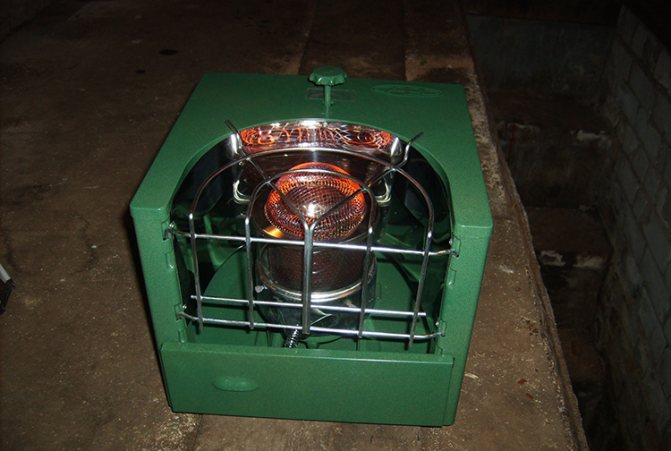

Diesel stove
Factors affecting egg production in chickens in winter
Winter leads to a decrease in natural biorhythms in chickens. A decrease in winter temperature and a decrease in daylight hours also affect egg production.Vitamin deficiency, lack of plant and protein foods have a negative effect. Proper care, no stress, balanced nutrition helps to significantly extend the period of egg production and get fresh eggs almost throughout the winter.
Video: how to feed chickens in winter so that they lay eggs
Read more about the features of egg production in chickens in winter in this article.
Every day it becomes easier and more profitable to keep laying hens. New, more productive breeds are being bred, effective, balanced feed and various additives appear. Manufacturers offer automated bird care systems. New building materials make it easier to build chicken coops. As a result, the number of laying hens is increasing. Join us and there will always be fresh homemade eggs on your table.
Video: the correct device for a winter chicken coop
Increased productivity in cold weather
As soon as the birds molt and feathers change, you can start organizing winter care for chickens, which increases egg production. hens begin to lay eggs less because the instinct of procreation is triggered in them in the spring. The organization of an artificial spring will help to preserve egg production.
In winter, laying hens are best kept in a warm room, where the air temperature does not drop below 15 ℃. This will help increase productivity by 40%. chickens for the winter at home are supplemented with no more than 14 hours. Keeping chickens in winter with longer supplementary lighting reduces life expectancy. In some cases, extended daylight hours lead to premature molting. Then the chickens completely lose the ability to lay eggs and die 1-2 years earlier.
Overwintering of domestic chickens without loss of productive qualities is possible with the installation of a special device - a rheostat that controls the brightness of the lighting. This will allow you to send the bird to the night before dark. Special sensors vary the light from yellow to orange to night illumination.
Another way to increase productivity is to feed greens. This option is suitable for those who have a winter greenhouse. You can plant grass and feed chickens year round. The feeding technique gives an increase in egg production by almost 50%.
Reduce the stock to 1 chicken per square meter. area. Chickens fly poorly in crowded conditions and often die from diseases. They need privacy to lay eggs, and this is difficult to achieve with a large population.

